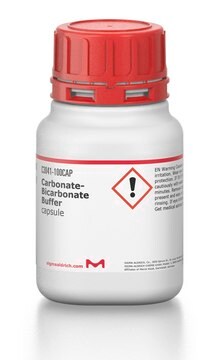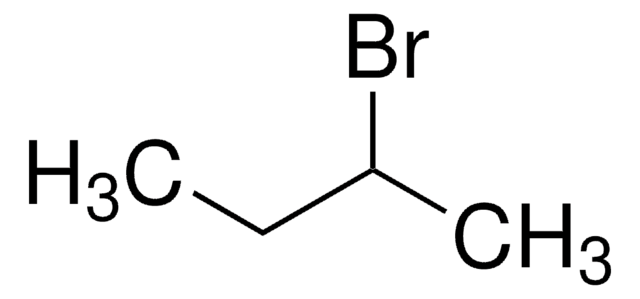244260
Hydrobromic acid
ACS reagent, 48%
About This Item
Produits recommandés
Qualité
ACS reagent
Niveau de qualité
Densité de vapeur
2.8 (vs air)
Pression de vapeur
320 psi ( 21.1 °C)
8 mmHg ( 25 °C)
Description
48% aqueous HBr
Essai
47.0-49.0% (ACS specification)
48%
Forme
liquid
Résidus de calcination
≤0.002%
Densité
1.49 g/mL at 25 °C (lit.)
Traces d'anions
SO42- and SO32-: ≤0.003%
chloride (Cl-): ≤0.05%
iodide (I-): ≤0.003%
phosphate (PO43-): ≤0.001%
Traces de cations
Fe: ≤1 ppm
Se: ≤0.01 ppm
heavy metals: ≤5 ppm (by ICP-OES)
Chaîne SMILES
Br
InChI
1S/BrH/h1H
Clé InChI
CPELXLSAUQHCOX-UHFFFAOYSA-N
Vous recherchez des produits similaires ? Visite Guide de comparaison des produits
Catégories apparentées
Description générale
Application
- For the regioselective bromination of anilides to bromoanilides.
- Oxidative bromination of olefins, alkynes, and ketones to corresponding dibrominated alkanes, dibrominated alkenes, and α-bromoketones.
Autres remarques
Mention d'avertissement
Danger
Mentions de danger
Conseils de prudence
Classification des risques
Eye Dam. 1 - Met. Corr. 1 - Skin Corr. 1B - STOT SE 3
Organes cibles
Respiratory system
Code de la classe de stockage
8B - Non-combustible corrosive hazardous materials
Classe de danger pour l'eau (WGK)
WGK 1
Point d'éclair (°F)
Not applicable
Point d'éclair (°C)
Not applicable
Faites votre choix parmi les versions les plus récentes :
Déjà en possession de ce produit ?
Retrouvez la documentation relative aux produits que vous avez récemment achetés dans la Bibliothèque de documents.
Les clients ont également consulté
Notre équipe de scientifiques dispose d'une expérience dans tous les secteurs de la recherche, notamment en sciences de la vie, science des matériaux, synthèse chimique, chromatographie, analyse et dans de nombreux autres domaines..
Contacter notre Service technique








